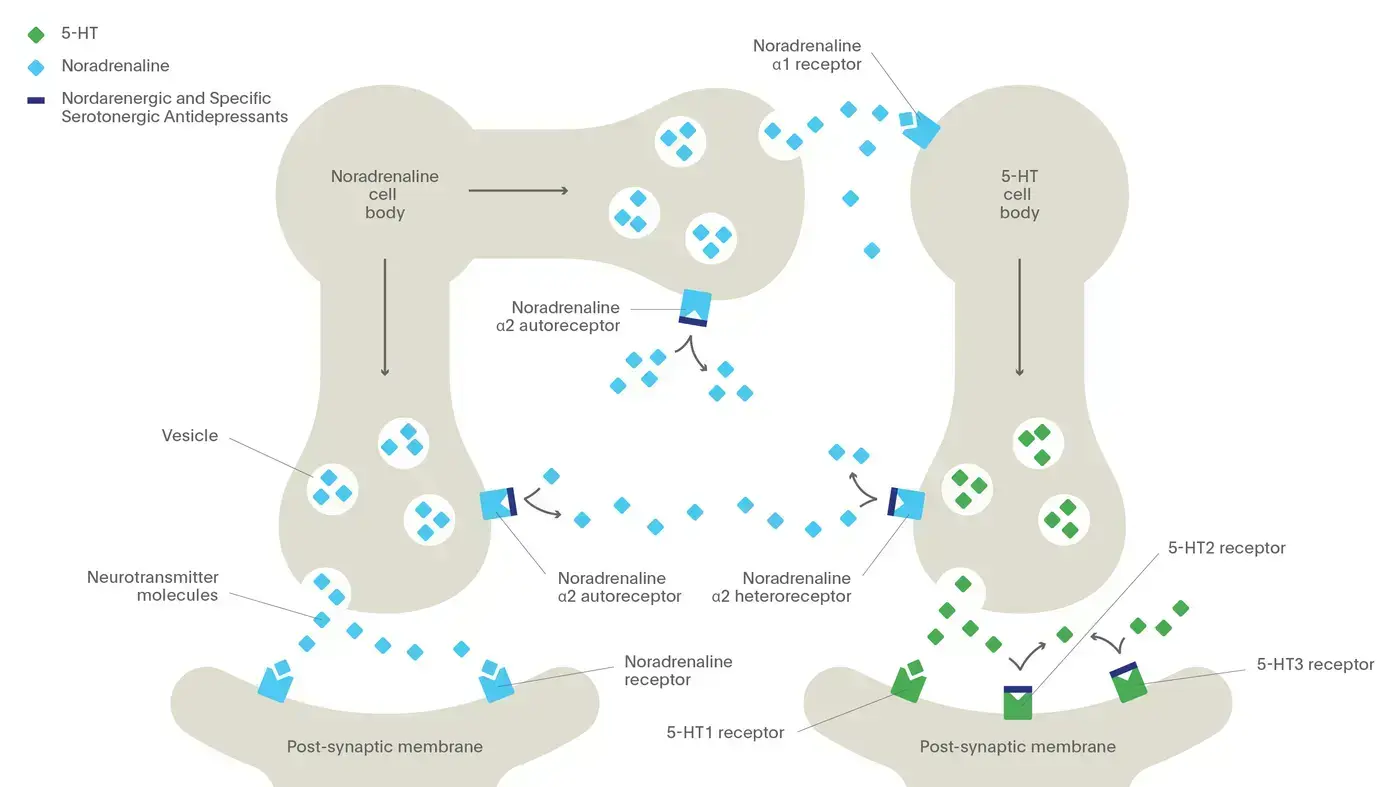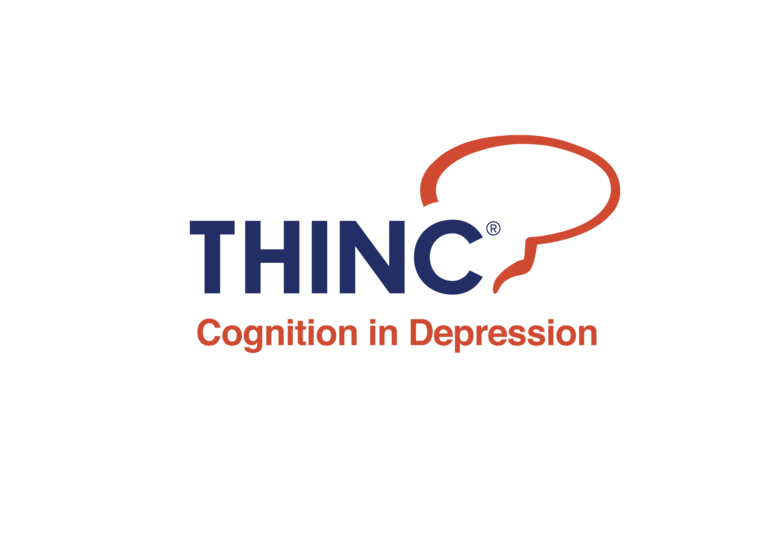Depression is associated with reduced levels of monoamines in the brain. Noradrenergic and specific serotonergic antidepressants (NaSSAs), such as mirtazapine, have a dual mechanism of action that increases the concentration of 5-HT and noradrenaline in the synaptic cleft to within the normal range. NaSSAs bind to and inhibit both noradrenaline a2-autoreceptors and noradrenaline a2-heteroeceptors. This action prevents the negative feedback effect of synaptic noradrenaline on 5-HT and noradrenaline neurotransmission, and neurotransmission sustained. NaSSAs also block 5-HT2 and 5-HT3 receptors on the post-synaptic membrane, which causes enhanced 5-HT1 mediated neurotransmission.
The mechanism of action of noradrenergic and specific serotonergic antidepressants




